
The Dewey Decimal Classification (DDC), colloquially known as the Dewey Decimal System, is a proprietary library classification system which allows new books to be added to a library in their appropriate location based on subject. It was first published in the United States by Melvil Dewey in 1876. Originally described in a 44-page pamphlet, it has been expanded to multiple volumes and revised through 23 major editions, the latest printed in 2011. It is also available in an abridged version suitable for smaller libraries. OCLC, a non-profit cooperative that serves libraries, currently maintains the system and licenses online access to WebDewey, a continuously updated version for catalogers.

Sir Joseph Whitworth, 1st Baronet was an English engineer, entrepreneur, inventor and philanthropist. In 1841, he devised the British Standard Whitworth system, which created an accepted standard for screw threads. Whitworth also created the Whitworth rifle, often called the "sharpshooter" because of its accuracy, which is considered one of the earliest examples of a sniper rifle, used by some Confederate forces during the American Civil war.

A lathe is a machine tool that rotates a workpiece about an axis of rotation to perform various operations such as cutting, sanding, knurling, drilling, deformation, facing, threading and turning, with tools that are applied to the workpiece to create an object with symmetry about that axis.

Guilloché is a decorative technique in which a very precise, intricate and repetitive pattern is mechanically engraved into an underlying material via engine turning, which uses a machine of the same name. Engine turning machines may include the rose engine lathe and also the straight-line engine. This mechanical technique improved on more time-consuming designs achieved by hand and allowed for greater delicacy, precision, and closeness of line, as well as greater speed.

Cyclopædia: or, An Universal Dictionary of Arts and Sciences is a British encyclopedia prepared by Ephraim Chambers and first published in 1728; six more editions appeared between 1728 and 1751 with a Supplement in 1753. The Cyclopædia was one of the first general encyclopedias to be produced in English.

Woodturning is the craft of using a wood lathe with hand-held tools to cut a shape that is symmetrical around the axis of rotation. Like the potter's wheel, the wood lathe is a mechanism that can generate a variety of forms. The operator is known as a turner, and the skills needed to use the tools were traditionally known as turnery. In pre-industrial England, these skills were sufficiently difficult to be known as "the mysteries of the turners' guild." The skills to use the tools by hand, without a fixed point of contact with the wood, distinguish woodturning and the wood lathe from the machinist's lathe, or metal-working lathe.
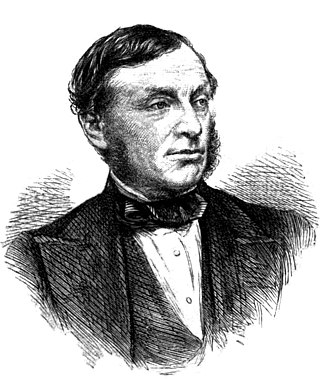
Sir Daniel Gooch, 1st Baronet was an English railway locomotive and transatlantic cable engineer. He was the first Superintendent of Locomotive Engines on the Great Western Railway from 1837 to 1864 and its chairman from 1865 until his death in 1889.

In woodworking and carpentry, a pair of winding sticks is a tool that aids in viewing twist in pieces of lumber by amplifying the defect. Winding sticks can be as simple as any two straight sticks or they can be elegant, decorated, dimensionally stable wood like mahogany. A pair of framing squares may also be suitable. Traditionally they are 16 inches (41 cm) to 30 inches (76 cm) long, 1+3⁄4 inches (44 mm) tall and tapered in their height from 3⁄8 inch (9.5 mm) to 1⁄8 inch (3.2 mm). The longer the winding sticks, the more they will amplify the wind. It is common for a woodworker to make a matching pair for the purpose, and contrasting colors of woods improve the discernability of differences in level between the two sticks as they are compared.

John Forbes Royle, British botanist and teacher of materia medica, was born in Kanpur in 1798. He was in charge of the botanical garden at Saharanpur and played a role in the development of economic botany in India.
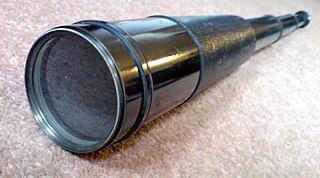
Negretti and Zambra was a company that produced scientific and optical instruments and also operated a photographic studio based in London.

Nicolas Grollier de Servière (1596–1689) was a French inventor and ornamental turner who became well known for creating a series of fantastic machines.

Sir Francis Ronalds FRS was an English scientist and inventor, and arguably the first electrical engineer. He was knighted for creating the first working electric telegraph over a substantial distance. In 1816 he laid an eight-mile length of iron wire between wooden frames in his mother's garden and sent pulses using electrostatic generators.
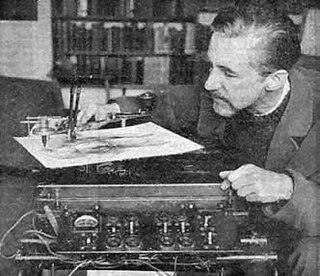
Desmond Paul Henry (1921–2004) was a Manchester University Lecturer and Reader in Philosophy (1949–82). He was one of the first British artists to experiment with machine-generated visual effects at the time of the emerging global computer art movement of the 1960s. During this period, Henry constructed a succession of three electro-mechanical drawing machines from modified bombsight analogue computers which were employed in World War II bombers to calculate the accurate release of bombs onto their targets. Henry's machine-generated effects resemble complex versions of the abstract, curvilinear graphics which accompany Microsoft's Windows Media Player. Henry's machine-generated effects may therefore also be said to represent early examples of computer graphics: "the making of line drawings with the aid of computers and drawing machines".
The Holtzapffel dynasty of tool and lathe makers was founded in Long Acre, London by a Strasbourg-born turner, Jean-Jacques Holtzapffel, in 1794. The firm specialized in lathes for ornamental turning but also made a name for its high-quality edge and boring tools.

Peter Nicholson was a Scottish architect, mathematician and engineer. Largely self-taught, he was apprenticed to a cabinet-maker but soon abandoned his trade in favour of teaching and writing. He practised as an architect but is best remembered for his theoretical work on the skew arch, his invention of draughtsman's instruments, including a centrolinead and a cyclograph, and his prolific writing on numerous practical subjects.
Ornamental turning is a type of turning, a craft that involves cutting of a work mounted in a lathe. The work can be made of any material that is suitable for being cut in this way, such as wood, bone, ivory or metal. Plain turning is work executed on a lathe where a transverse section through any part of the work comprises a plain circle. Ornamental turning, also called Complex turning, is executed on a lathe with attachments which convert that plain circular section to variants of outline; these range from a simple series of cuts taken at intervals around the work to non-circular movements whereby the whole of the circular shape is removed to give a completely different form. Such shapes are achieved by various means, the principal ones being:
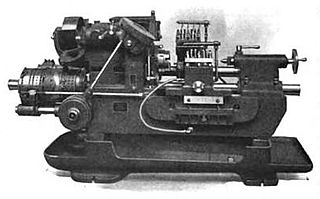
In metalworking and woodworking, an automatic lathe is a lathe with an automatically controlled cutting process. Automatic lathes were first developed in the 1870s and were mechanically controlled. From the advent of NC and CNC in the 1950s, the term automatic lathe has generally been used for only mechanically controlled lathes, although some manufacturers market Swiss-type CNC lathes as 'automatic'.
John Weale was an English publisher of popular scientific, architectural, engineering and educational works.
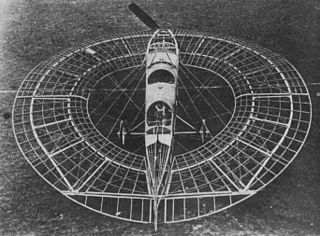
George Tilghman Richards (1884–1960), usually known as G. Tilghman Richards, was a British aeronautical engineer, mechanical engineer, and Science Museum, London curator, best known for his work on the Lee-Richards annular aeroplanes.
Charles Atherton was a British scientific engineer from Calne, Wiltshire. He was appointed as Chief Engineer and Inspector of Steam Machinery at Her Majesty's Woolwich Dockyard in 1847; and a second time between 1851 and 1862. He served in the same capacity at Her Majesty's Devonport Dockyard between 1848 and 1851.

















